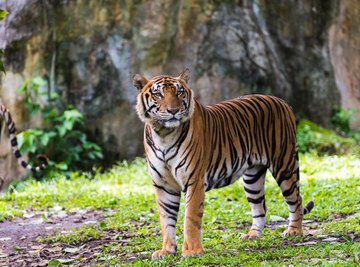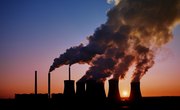
Biodiversity describes the variety of species that make up an ecosystem. An ecosystem is the combination of the living and nonliving things in a location. For an ecosystem to function, it depends on a rich variety of organisms, interacting with each order to maintain a balance in that particular ecosystem. Some factors can affect this biodiversity and thus the sustainability of an ecosystem.
The Earth contains an estimated 10 million species. These are the living part of the ecosystem. Certain effects contribute to the decline in this vast number of species. Some of the effects are the result of direct drivers, while others are the result of indirect drivers.
Direct Drivers
Direct drivers have a direct impact on the biodiversity of an ecosystem. Examples of direct drivers include fertilizer and insecticide use and overhunting. Biotic factors in an ecosystem are divided into producers, consumers and decomposers. These factors have to be maintained in a certain ratio for the ecosystem to thrive. For example, when some consumers, like tigers and lions, are poached to near extinction, this change has a direct impact on the ecosystem. These animals are primary consumers that keep down the population of secondary consumers like rabbits, deer and other herbivores or omnivores. When predator populations decline, their natural prey will proliferate and put a strain on other resources in the ecosystem.
Indirect Drivers
Indirect drivers also affect biodiversity. For instance, industrialization and overpopulation could lead to deforestation, depriving biotic factors of their natural habitat. Other indirect effects include the byproducts of industrialization, like acid rain, which causes a decline in the number of plants and animals. Acid rain raises the acidity of water, making it too toxic for fish and other organisms to thrive. Other activities that could lead to a reduction in biodiversity include the construction of dams, which alter the natural flow of water and affect the migratory patterns of fish on their way to spawn. Climate change is also an indirect driver that affects biodiversity.
Invasive Species
The U.S. Environmental Protection Agency describes invasive species as “one of the largest threats to our terrestrial, coastal and freshwater ecosystems.” Invasive species are not native to an ecosystem. When these species are introduced to an ecosystem, they can quickly overwhelm the natural habitats, competing with native species for limited resources and eventually causing a decline in native numbers. The U.S. Department of Agriculture lists cogongrass as an example of an invasive species of grass. This plant is native to South Asia, and was introduced to the United States in 1912. The plant affects the biodiversity of native U.S. plants by proliferating and crowding out native plants.
